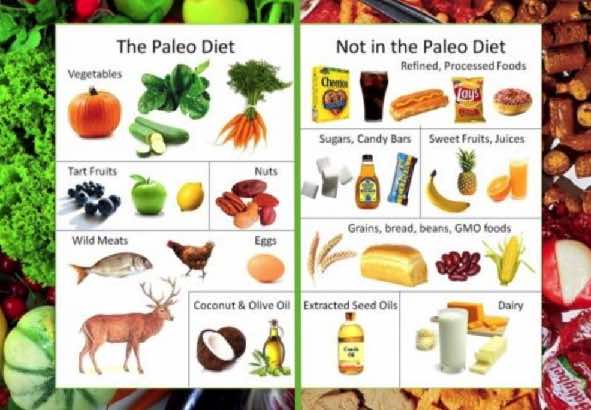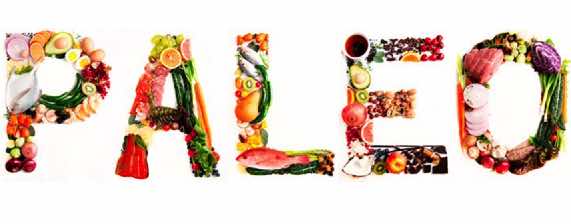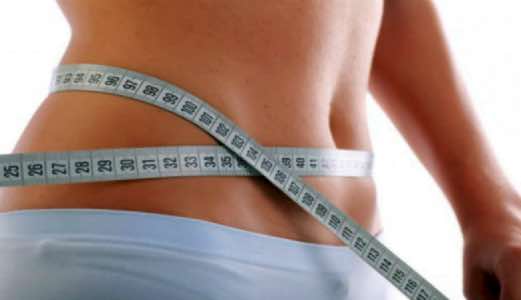While there are lots of fad diets out there, the Paleo diet isn’t one of them. Unlike other nutritional approaches, the Paleo diet focuses on your genetics.
Initially, the Paleo diet arose on the premise that we haven’t evolved with the carbohydrates that are a significant feature of our plates today. For you to understand why evolution is important, it’s necessary to explain how we evolve as humans compared to other species.
Species such as bacteria evolve at a rapid rate, which is what allows them to adapt to antibacterials. For example, some bacteria evolve over a period of minutes, allowing them to fend off the antibiotics that aim to kill them. In contrast, humans have evolved from ape-like creatures to bipedal homosapiens over a period of six million years. As we are so slow to evolve, we don’t adapt to the changes around us as quickly.
Because of this, many of the dietary changes that have happened over the last two centuries have affected our health and wellbeing. In the nineteenth century, this meant the introduction of sugars and spices from different colonies. More recently and more rapidly, we’ve begun consuming vegetables from around the world, plus an excessive number of carbohydrates. Until these points in dietary history, we were thriving on proteins and fats.
Due to our slow evolutionary processes, we haven’t adapted to these sudden dietary changes. As such, not only do we not need the extra foods that appeared swiftly after our ancestors spent millions of years eating a caveman diet, we may be harming ourselves by eating them. To bolster this idea, there’s an overwhelming body of evidence mounting to suggest that the diets we eat today contribute to inflammatory and autoimmune diseases, such as Crohn’s and Ulcerative Colitis.
The Paleo Diet acts on the premise that by eliminating these products, we’ll lose weight, increase our energy, and enhance our wellbeing. To understand this further, you need an insight into what the Paleo Diet is, what you can eat, and how it works.
Table of Contents
What is a Paleo Diet?

Unlike Atkins, which promotes eating lots of fats, the Paleo Diet focuses on items that were naturally available to our ancestors. In short, they include:
- Animals they could hunt
- Fruit and veg that grew naturally in their environments, providing they are low on fructose
- Wholefoods such as nuts and seeds
- Some legumes
The idea is if our caveman ancestors couldn’t get their hands on a food without processing it, ordering it from a supermarket, or importing it from another country; it isn’t Paleo. This includes dairy, which requires processing. And, potatoes, which needed a lot of attention to grow. However, some Paleo proponents may allow these foods, but we’ll examine that later.
The diet was first popularized in the seventies, when a gastroenterologist named Dr. Walter L Voegtlin, a consultant gastroenterologist. However, it wasn’t until 2002 that the diet gathered in popularity. This was when Dr. Loren Cordain Ph.D. began investigating the diet and published The Paleo Diet, which rapidly garnered a following amongst scientific experts and natural health proponents. Cordain later went on to create modified versions of his book for athletes and other niche demographics.
Over the years, the Paleo Diet has also become known as the caveman diet or the hunter-gatherer diet. In essence, each of the names signifies one clear message: you can no longer eat pasta, cheese, or anything else that’s processed because our cave-dwelling ancestors didn’t have access to them.
Finally, it’s important to note that the Paleo Diet does not involve counting calories. As such, while you may spend time excluding food groups, you’ll save it by no longer punching numbers into apps or relying on points systems.
The benefits of following a Paleo diet for your health

Because of the foods it excludes and includes, there are benefits of following a Paleo diet for your health:
Your diet becomes cleaner
By no longer eating processed foods, your diet automatically becomes cleaner. This means no e-numbers, additives, or procedures that result in foods increasing your risk of cancer. For example, processed meats have an association with increased gastric cancer risk.
You encounter anti-inflammatory benefits
As we discussed earlier, scientists are beginning to accept that the volume of carbs we eat may contribute towards the prevalence of inflammatory and autoimmune diseases in our society. For example, one study comparing Caucasians who eat a carb-heavy diet and Asians who eat less found that those who ate fewer carbs were less likely to develop Crohn’s or Ulcerative Colitis.
Additionally, the Paleo diet promotes the use of olive oil, nuts, and seeds. All of these ingredients have anti-inflammatory benefits, which can tackle diseases throughout your body. While the spectrum of these disorders is broad, there are some useful examples:
- One study demonstrates how consuming extra virgin olive oil reduces your risk of cardiovascular disease. This even applies to those who have a high risk already.
- Consuming brazil nuts reduces oxidative stress in niche groups, including dialysis patients. In this study, the researchers demonstrated how eating Brazil nuts, which are permitted on the diet, reduces inflammatory markers in those with reduced kidney function.
- Broccoli, one of the permitted vegetables, acts as a powerful antioxidant that strengthens your bones. This means you lower your risk of osteoporosis, which also means fewer fractures and less muscle weakness in the future.
The Paleo diet increases your iron intake
Around 40%–50% of us are iron deficient in some way. Iron deficiency anemia means less oxygen is transported around our bodies, and our hemoglobin struggles to take away carbon dioxide so our lungs can ditch it during expiration. As a result, we feel more tired and our organs have to work hard.
The Paleo diet promotes eating more red meat. However, those who adhere to it strictly specify that grass-fed or organic are the only types permitted. Eating more red meat, plus some of the specified vegetables, means you consume more iron. This then reduces your chances of developing iron deficiency anemia.
You’re less likely to snack
While the Paleo diet doesn’t involve calorie counting, its constituents make you less likely to snack anyway. Proteins and fats burn slowly, and they don’t generate the energy crashes that make you crave more food. As such, eating more of them allows you to achieve satiety, leading to a natural reduction in calories. This also means you’re less likely to overwork your digestive system.
However, if you do need to snack and you want to make the process easier, there are plenty of Paleo-friendly products out there. For example, this dark chocolate and almond coconut bar will leave you feeling as though you’ve enjoyed the taste of a standard candy bar, without the poor nutrition.
Weight loss and Paleo go hand-in-hand
Admittedly, the weight loss that comes with the Paleo diet results from restricting your food choices. However, the diet does allow for a healthy overall balance of vitamins and minerals. Depending on your gender, losing weight reduces your risk of different types of cancer, lessens your chances of cardiovascular disease, and prevents chronic conditions such as diabetes. You can also check this video, which explains some of the top beenfits of paleo:
What can you eat on the Paleo diet?
As you may have guessed, the Paleo diet comes with restrictions. However, they’re not unmanageable, and the majority of the foods you can eat are available in everyday stores. To make it easier, we’ll break this section down into categories.
Meats and Seafood
- Beef
- Lamb
- Chicken
- Turkey
- Pork
Leading Paleo diet experts will state that you can eat most meats. However, it’s better to aim for grass-fed or organic products. The same rule applies to seafood; most is okay, but it’s better to aim for wild-caught fish.
Drawing on the high protein nature of the Paleo diet, Sogo Snacks produce beef sticks that come from animals which have never encountered antibiotics. As such, you can snack on protein throughout the day, without worrying about building antibiotic resistance.
Vegetables
Here’s where the foods you can eat on the Paleo diet become more complicated. Some proponents state that vegetables such as carrots and potatoes are banned, while others take a liberal approach and allow them. However, this is our recommended list:
- Bell peppers
- Onions
- Leeks
- Eggplants
- Cauliflower
- Broccoli
- Asparagus
- Cucumber
- Cabbage
- Okra
- Avocadoes
- Celery
- Spinach
- Lettuce
- Beet tops
- Watercress
- Swiss chard
- Rocket
- Bok choy
- Radishes
- Kale
- Mustard greens
- Carrots – which strict proponents don’t like
- Turnips
- Parsnips – another that strict proponents dislike
- Sweet potatoes
- Potatoes – again, strict followers dislike these
- Artichokes
- Yams
- Butternut squash
- Pumpkin squash
- Zucchinis
- Button mushrooms
- Oyster mushrooms
- Portobello
- Shiitake
- Porcini
- Crimini
- Chanterelle
- Morel
We’ve tried to split the vegetables into different categories. As you can see, there’s plenty of variety regarding flavors, texture, seasons, and what you can use the vegetables for. For example, sweet potatoes and squashes are both excellent for curries, while zucchinis are great for spiralizing as a pasta replacement.
Fruits allowed on the Paleo diet
While many believe that fruits aren’t permitted on the Paleo diet due to their fructose content, some have a higher glycaemic index than others. This means that they will cause your blood sugar to spike rapidly, leading to the type of energy crash and inflammatory processes that affect your health.
The fruits you can eat on the Paleo diet include:
- Apples
- Bananas
- Berries such as strawberries, cranberries, blackberries, raspberries, and blueberries
- Oranges
- Grapefruit
- Plantain
- Pears
- Plums
- Nectarines
- Peaches
- Papaya
- Pomegranate seeds
- Pineapple
- Cherries
- Apricots
- Watermelons
- Kiwi
- Lemons
- Limes
- Coconuts
- Figs
- Dates
- Tomatoes
- Olives
- Passion fruits
Again, strict proponents may try to avoid most fruits altogether or significantly limit the amount they consume. However, they’re an excellent source of minerals, and they allow you to gain the satisfaction that comes with eating something sweet, without resorting to processed sugars.
Seeds and Nuts
- Flax seeds
- Sesame seeds
- Pumpkin seeds
- Chia seeds
- Sunflower seeds
- Brazil nuts
- Cashews
- Pine nuts
- Macadamias
- Chestnuts
- Pistachios
- Cashews
Herbs and spices
Most herbs and spices are acceptable on the Paleo diet and give you the opportunity to add variety to your diet. While this list isn’t exhaustive, some of the herbs and spices you can eat on the Paleo diet include:
- Bay leaves
- Basil
- Black pepper
- Coriander/cilantro
- Cayenne pepper
- Cloves
- Chilies
- Cumin
- Chives
- Cinnamon
- Dill
- Fennel seeds
- Garlic
- Ginger
- Horseradish
- Hot peppers
- Lavender
- Mint
- Mustard seeds
- Nutmeg
- Oregano
- Parsley
- Paprika
- Rosemary
- Sage
- Star anise
- Tarragon
- Thyme
- Turmeric
- Vanilla
Foods that may or may not be Paleo?
There are certain foods that strict Paleo followers will not allow, while others add them in small amounts. They include:
- Alcohol
- Butter
- Cured meats
- Chocolate – (Dark and with a high cocoa content are ok)
- Coffee
- Dairy – some forms
- Honey – Natural
- Maple syrup – Natural
- Sausages
- Tea
- Vinegar
Some of these foods don’t belong under the original Paleo premise. For example, our ancestors did begin drinking alcohol during the ancient periods, but questions remain whether we’ve evolved to adapt to alcoholic beverages. Therefore, some who try the Paleo diet may choose to include small amounts of alcohol in their diet, but only those that arise from natural sources.
What can’t you eat on the Paleo diet?
If you’re going to take a purist approach to the Paleo diet, you’ll reject any food that wasn’t available before the Neolithic era. The Neolithic period began around 10,200 BC, which means even dietary inventions from the Romans and Ancient Greeks that seem relatively ‘natural’ might be excluded.
The underlying essence of the Paleo diet is that you cannot eat processed foods. So, even though the bread you buy technically features ingredients that are primarily natural, the way it is made makes it a processed food that isn’t conducive to the Paleo lifestyle. However, you can use Paleo ingredients in their natural form to create snacks that are similar to the ones that many people eat as a part of their Westernised diet. For example, RXBARS are full of proteins such as egg whites and dates, yet they come with all the taste of chocolate. So, while it may seem as though you are limited, the Paleo industry does keep your options open.
For those who began promoting this way of eating and living, the Neolithic era we have mentioned above is the period in which we started encountering chronic diseases because our bodies couldn’t handle the sudden steer towards processed food. We just haven’t evolved to accommodate them.
Overall, you can eat a lot of meat, fish, vegetables, grains, and some fruits. You cannot eat grains, dairy, specific fruit and vegetables, and certain oils. But, to make life easier, you need more details.
A quick guide to what you shouldn’t eat on the Paleo diet
Grains
- Amaranth
- Barley
- Buckwheat
- Corn
- Oats
- Quinoa
- Rice
- Rye
- Spelt
- Wheat
As you can see, not being able to eat these grains means no pasta, rice, bread, or baked goods. However, there are ways you can use the foods that are permitted on the Paleo diet to substitute for them.
Obviously, this means flour is out of the question. However, companies such as Birch Bender produce alternatives, such as their pancakes and waffles mix. As such, you shouldn’t feel as though you can’t enjoy your usual treats; especially when it comes to breakfast.
Beans and legumes
Although you can eat some beans and legumes on the Paleo diet, the following are not allowed:
- Black beans
- Garbanzo beans
- Lentils
- Pinto beans
- Red beans
- Soy
- White beans
Dairy
Although some who take a laid-back approach to the Paleo diet will allow dairy, strict followers do not. Just to make sure we’re clear, your Paleo dairy ban includes:
- Cheese
- Cottage cheese
- Dairy creamer
- Ice cream
- Milk
- Powdered milk
- Yoghurt
All but the strictest Paleo followers permit butter and ghee. However, if you want to see the best results, you might want to exclude them for the first month and gradually reintroduce them. When you do reintroduce them, make sure you add them in small amounts only.
Vegetable oils
There’s a surprisingly long list of vegetable oils you cannot use on the Paleo diet. They include:
- Canola
- Corn oil
- Crisco
- Cottonseed
- Grapeseed
- Margarine
- Palm
- Peanut
- Sunflower
- Vegetable
The good news is, you can still use olive oil and coconut oil. However, in keeping with the Paleo ethos, you should buy them in their purest forms wherever possible.
Sugar and sweeteners
If you have a sweet tooth and you struggle to exist without your sweet fix, you might find excluding sugar and sweeteners a challenge. However, you can substitute with the fruits we listed above. For now, here are the sugars and sweeteners you must avoid on the Paleo diet:
- Aspartame
- Agave
- Brown rice syrup
- Brown sugar
- Anything that contains Dextrose or ends in ‘ose.’
- Cane sugar and syrup
- Corn syrup
- Equal
- Glucose-based syrup
- Malt syrup
- Splenda
- Sucralose
- Truvia
Initially, excluding all of the above from your diet isn’t fun. This is because your brain’s reward center relies on them for a kick and your body misses the sudden bursts of energy they bring. However, after your detox, you will lose weight, and feel less lethargic.
Fortunately, as the diet is gathering in popularity, so is the number of chefs working with it. This means books such as Paleo Cooking With Your Instant Pot are available to make Paleo cooking more convenient. Similarly, if you’re leading a hectic lifestyle, this book by Vinsent Brian will allow you to create speedy Paleo meals with little effort. So, while you may experience some physical changes initially, your life shouldn’t become inconvenient.
Certain types of seafood
It comes from the sea, so it’s permissible, right? Wrong. There are certain types of seafood you can’t eat on the Paleo diet, and they include:
- King mackerel
- Shark
- Swordfish
- Tilefish
That list isn’t particularly limiting, which means it should be easy to stick to.
Other items to avoid on the Paleo diet
Don’t make the mistake of believing that your usual table salt is okay. If you’re going to take the diet seriously, switch your iodized salt to sea salt instead. Iodized salt is overly processed, and it does not contain the trace minerals that benefit your body on the Paleo diet.
It’s probably worth finally noting that all processed foods are off the menu. This includes forms of honey and maple syrup that aren’t natural.
What does a day on the Paleo diet look like?
After reading all of the above, you may be left feeling as though a day on the Paleo diet is bland. However, if you are willing to learn and take an inventive approach to cooking, you’ll find it’s more exciting than your ‘convenient’ current diet. Why? Because you have to find new ways to make food enticing, which almost always leads to discoveries.
Here’s what to expect in a day on the Paleo diet:
- Breakfast: Scrambled eggs with smoked salmon
- Snack: Banana and almond butter
- Lunch: Roast chicken inside lettuce wraps, smeared with mustard or a Paleo-friendly condiment of your choice
- Snack: A handful of nuts or olives
- Dinner: Greek-style meatballs with roasted Mediterranean vegetables and avocados drizzled with olive oil
It is probably worth noting again that the Paleo diet doesn’t require you to calorie count. Therefore, the above portions can be as big or as small as you like.
If you want to add more variety to your snacks from the start, there are options available online. This chocolate chip cookie follows the Paleo ethos to the letter and gains its sweetness from permitted honeys. Similarly, if you want to experience the anti-inflammatory benefits of eating grains and nuts, without aiming for the wrong ones, Kitchfix have a solution.
Can you drink coffee on the Paleo diet?
Coffee is banned on the Paleo diet, which is often a bitter pill to swallow for those who rely on their daily dose of caffeine. However, if you drink instant coffee, it’s probably worth recognizing that you’ll get more energy from an apple than your rushed cup of joe in the morning.

With that said, if kicking coffee is a struggle, you can substitute it for green tea for a short while. Although it isn’t exclusively banned on the Paleo diet, it shouldn’t act as a staple fluid in the same way that water does. Green tea features as much energy as coffee and has far more antioxidants. Therefore, it’s an acceptable alternative until you recognize that the diet’s constituents provide you with all the energy you need.
But, why is coffee banned from the Paleo diet?
There’s evidence to suggest that coffee increases insulin resistance. We need insulin to mobilize energy into our cells so that our bodies can function. If you’re a regular coffee drinker, have you ever noticed how you’ve gradually needed more to get yourself started in the morning? Or, a bigger hit for that afternoon boost? Essentially, drinking it means you’re blocking your cells from receiving healthier forms of energy, which last longer. This can also lead to habits such as snacking, so kicking coffee out is no bad thing.
Is it hard to follow the Paleo diet?

Initially, the excitement of starting the Paleo diet will make the process easy. You’re discovering new foods, meeting a new challenge, and joining in on what feels like a health kick trend.
But, many people find that after a week they begin giving into their cravings for processed food and their old lifestyle. This usually starts with “Oh, I’ll just have one,” which escalates into having many.
To make following the Paleo diet easier, start out by recognizing that you will reach the point where cravings kick in and commit to not giving into them. You should also take the following tips on board:
- You can eat as much as you want; Providing you stick to the permitted foods list, you can eat as much as you want. If you have a craving, substitute for a Paleo friendly food and don’t let hunger set in. When you become more advanced with your Paleo adventure, you can try dehydrators to make fruit and vegetable snacks to take to work, allowing you to save money and prevent hunger.
- Planning is the key to success; Each Sunday, plan what you’ll eat each day. If you lead a busy lifestyle, find ways to batch make food. Failing to prepare is preparing to fail. To make sure meal prep works to your advantage, invest in food storage containers from the start. These ones by California Picnic feature compartments, allowing you to make eating on the go diverse and simple.
- Don’t expect speedy miracles; You will lose weight and you will feel healthier, eventually. But, your body needs to adjust to its sudden change in energy sources, which means you will feel lethargic for a short while. Manage your expectations accordingly and accept that you won’t feel energized and elated overnight. That change will come, though, and once you’ve seen it through you’ll thank yourself for doing it.
How much weight can I lose on the Paleo diet?

One of the primary reasons anybody is drawn towards a diet is to lose weight. So, here’s what you can expect from the Paleo diet:
- Most people will lose 5-10 pounds in the first week. However, this isn’t uncommon for any diet, so don’t expect the results to last.
- After this, your weight loss will plateau to 1 to 2 pounds per week
- However, you shouldn’t find the above disheartening; you can lose weight at the same rate as many other diets, without having to count calories.
It is also worth taking other factors that affect weight loss into consideration. For example, just before menstruating, women experience an increase in prostaglandins that lead to a sudden period of weight gain. This isn’t ‘true’ weight gain; it’s your body’s cells clinging to water.
Other examples of extenuating circumstances affecting your Paleo weight loss may include:
- If you workout regularly, you’ll gain muscle mass. This reflects itself as weight gain on the scales, but if you measure your inches and monitor how well your clothes fit, you will see this is not real weight gain.
- If you do weigh yourself, don’t do it more than once a day. Everything from bowel habits to your body clinging to fluids will introduce significant and unrealistic changes. In fact, once a week is better if you want to monitor progress accurately.
- Medications may also affect. But, if you are taking a drug such as an anti-diuretic, you may want to discuss the diet with your doctor first anyway.
Overall, adopting the Paleo diet means shifting away from processed foods that are high in sugars and other carbohydrates. When you eat too much of either, your body doesn’t just excrete all of them; it stores some as fat. In fact, alcohol is no longer the leading cause of liver disease, obesity is. Conditions such as Non-Alcoholic Fatty Liver Disease indicate that stepping away from weight gaining foods and trying healthier ones is desperately needed.
Paleo diet side effects
As we’ve already mentioned, you may initially experience lethargy while on the Paleo diet. Other side effects you can experience include:
- Intense carbohydrate cravings for the first few weeks
- Ketone breath – this is where your breath smells fruity, or as though you have been drinking alcohol
- Hypothyroid-like symptoms, such as feeling sensitive to the cold. This side effect suggests you need to eat more vegetables.
- Softer stools. A less-than-favorable side effect of ditching carbs means having softer stools. In some cases, you may experience ‘steatorrhea,’ which means stools that float and are fatty. If you do experience this side effect, you should tweak your diet to add more vegetables with fibre in them.
However, as this study notes, the positive side effects of the Paleo diet include:
- Balanced blood sugars
- Improved lipid profiles
- Lower insulin resistance
Combined, the above three factors reduce your risk of chronic diseases, cardiovascular diseases, and provide you with more energy.
While there’s no denying that the Paleo diet is a significant shift from the western diet many of us eat, it comes with significant benefits. Initially, following it may feel difficult. This is due to a combination of temporary side effects and adjusting to using natural products only. However, the more you delve into the diet, the more you’ll discover. Those who become pros are able to make cakes, pizzas, and breads that are paleo friendly. Or, if you want to streamline your experience, you can buy breads that are Paleo friendly. With a commitment to learning and the process, you too will feel healthier, lose weight, and prolong longevity. To build on the knowledge you’ve picked up here, we highly recommend reading Paleo for Beginners; just to kick start your new life.



